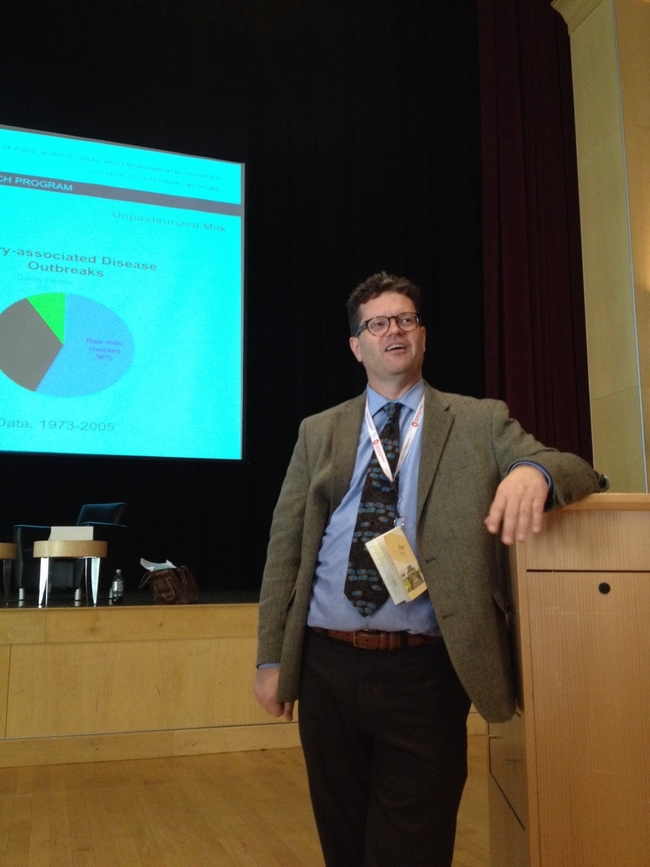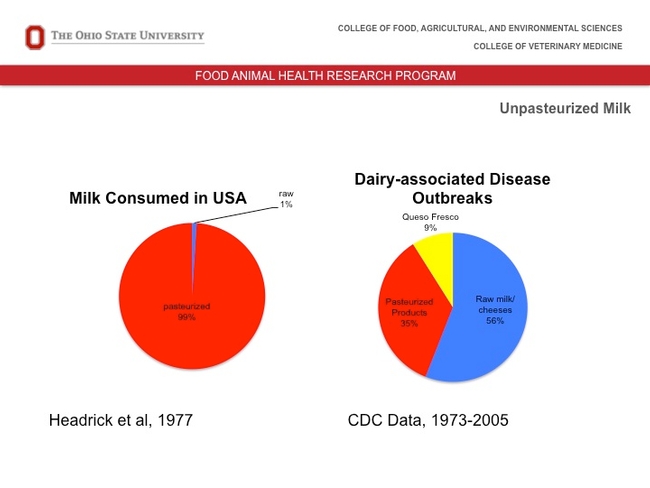
One of the events that attendees could sign up for was lunch with a scientist at The Ohio State University, located a few miles away from the conference venue. I chose Prof. Jeffrey LeJeune, an infectious disease microbiologist and epidemiologist, because a focus of his research is food safety, one of the topics included in the UC Global Food Initiative that UC President Janet Napolitano launched on July 1.
On the day of the luncheon, a Sunday, we were driven to The Ohio State University in buses the university provided. We assembled in the lobby of the Ohio Union (it was homecoming on campus and the Columbus marathon was in progress nearby), and were soon escorted to the tables of the scientists we had picked. The university kindly (and safely!) provided lunch.
At LeJeune's table, we introduced ourselves to one another. LeJeune began his presentation to his 15 guests by rebuffing the five-second rule. According to this rule, food dropped on the ground will not become contaminated with bacteria if it is picked up within five seconds of being dropped. LeJeune said it does not work. “Eating off the floor violates all food-borne illness prevention advice,” he warned.
Perhaps because we in his audience were all science writers, he proceeded to discuss communication challenges facing scientists. He said most of the emphasis in graduate training is on making discoveries, with hardly any attention paid to communicating these discoveries in lay language to benefit the general public. Other challenges he mentioned are the information explosion we are witnessing, resulting in deaf ears turned to many scientists' voices; and language barriers between scientists and journalists that hinder effective communication.

“The pasteurization of milk was a huge benefit to the health of the human population,” he said. “Most cheeses in the U.S. are pasteurized cheese products.”
We asked him many questions. He answered them all. He explained that the U.S. has the safest food supply. Despite this, pathogens can enter the food chain through live animals, he cautioned. Further, refrigeration could be inadequate. He said about 80 percent of food and vegetable contamination occurs post-farm. His tip for what to eat when traveling: “Avoid raw or unpeeled foods. It is best to choose what is fully cooked and hot.”
LeJeune noted there is no evidence to suggest that GM foods are problematic from a food safety perspective.
“There are some concerns for sure,” he said. “But these are largely economic or political. Nutrition-wise, GM foods can be beneficial. From a food safety and nutritional standpoint, I also see no significant differences between organic produce and non-organic or regular produce. There could be, however, some environmental impacts related to the different production systems.”
More questions followed. A discussion on E. coli bacteria gathered momentum, specifically how E. coli gets infected with a virus and how, when this virus decides to leave E. coli, it releases Shiga toxins, which, in turn, damage cells lining the kidney.
We were so engrossed in the discussion that it came as a surprise when one of the organizers of the luncheon strode into the room to inform us that our hour with the scientist was up and that the bus that had transported us to The Ohio State University was about to leave.
As we rose hastily from our chairs we thanked LeJeune for his presentation, which was clear and to the point – qualities all science (and other) writers appreciate. We know he had other topics to discuss with us: Can I cook my Jack-o'-Lantern after Halloween? (The answer is “Not if it sits out for more than two hours.”) And are raw diets for dogs a public health concern for humans? (The answer is “Your dog is more likely to have Salmonella if it is eating raw food.)
Although we didn't get to these topics, he left us with ample useful information about food safety. On the ride back to the conference, the bus was loud with conversation from the various lunch groups – what had been learned, how best it could be communicated, and how each one of us had made a new friend at the university.